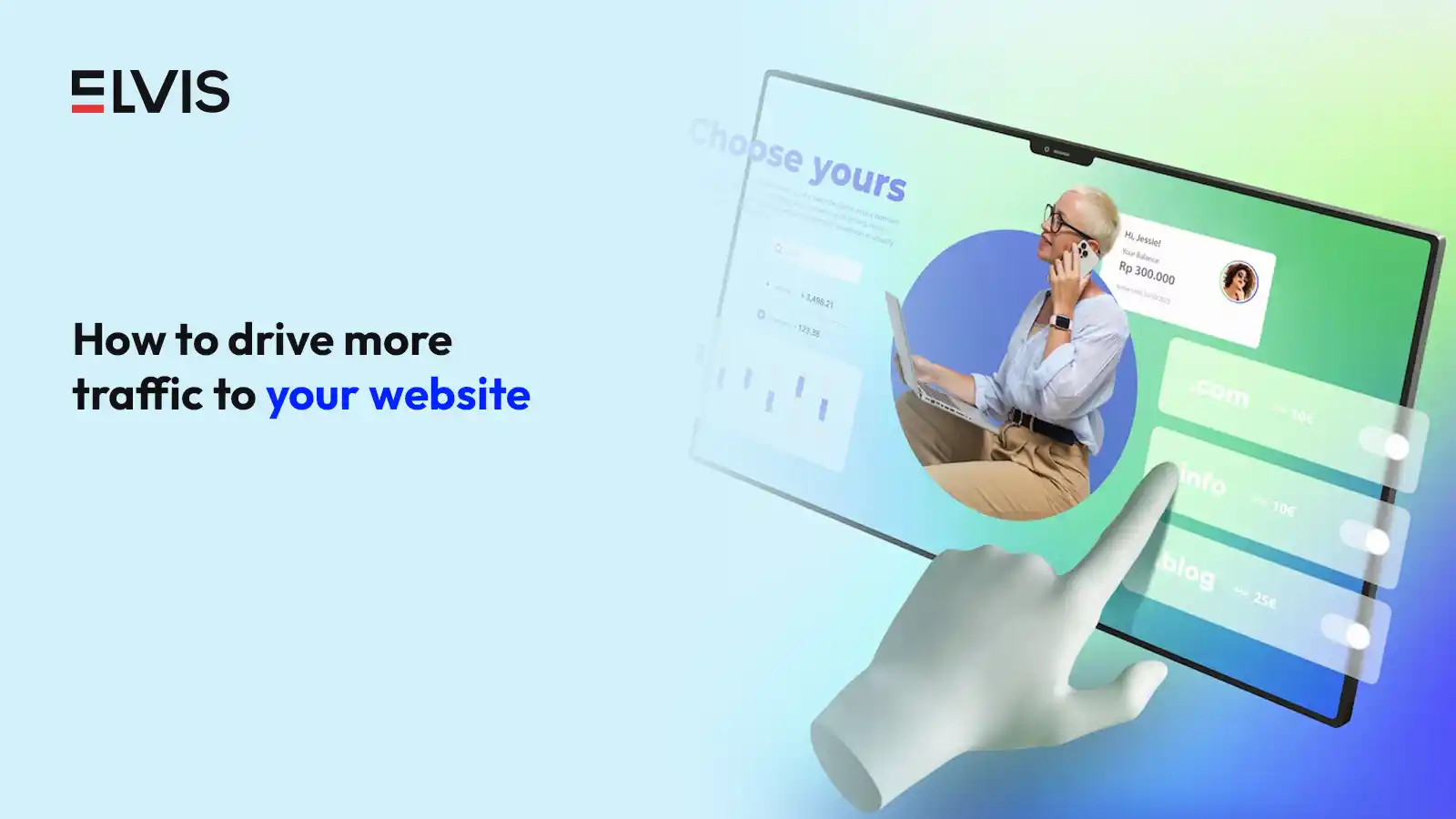Introduction
In today’s digital age, having a strong online presence is crucial for the success of any business or individual. One of the key metrics to measure this online presence is website traffic. Simply put, the more people visit your website, the more opportunities you have to convert them into leads, customers, or loyal followers.
In this blog post, we’ll explore effective strategies to drive more traffic to your website and boost your online visibility.
Understanding Your Audience
Before diving into specific tactics, it’s essential to understand who your target audience is. Conduct thorough research to identify their demographics, interests, and online behavior. By knowing your audience inside and out, you can tailor your content and marketing efforts to resonate with them effectively.
Keyword Research and Optimization
Keywords are the backbone of any successful SEO strategy. Start by researching relevant keywords that your audience is likely to search for. Utilize tools like Google Keyword Planner, SEMrush, or Ahrefs to identify high-volume keywords with low competition. Once you have your list of keywords, strategically integrate them into your website content, including titles, headings, meta descriptions, and body text.
Content Creation and Optimization
High-quality, engaging content is king when it comes to driving traffic to your website. Create valuable, informative content that addresses the needs and interests of your target audience. Whether it’s blog posts, videos, infographics, or podcasts, make sure your content is optimized for both search engines and human readers.
On-Page SEO Techniques
Optimizing your website’s on-page elements is crucial for improving its visibility in search engine results. This includes optimizing meta tags and descriptions, improving website speed and mobile-friendliness, and implementing internal linking strategies to improve navigation and user experience.
Off-Page SEO Strategies
Off-page SEO focuses on building your website’s authority and credibility through external factors such as backlinks and social signals. Invest time in building quality backlinks from reputable websites in your industry, engage in guest blogging and outreach, and leverage social media platforms to promote your content and drive traffic back to your website.
Utilizing Email Marketing
Email marketing remains one of the most effective ways to drive traffic to your website. Build and nurture an email list of subscribers who have opted in to receive updates and promotions from you. Craft compelling email content that provides value to your subscribers and entices them to click through to your website.
Analyzing and Adjusting Strategies
Regularly monitor your website analytics to track the effectiveness of your traffic-driving strategies. Pay attention to metrics such as traffic sources, bounce rates, and conversion rates. Use this data to make informed decisions and continually optimize your strategies for better results.
Utilizing Paid Advertising
While organic traffic is valuable, paid advertising can also be a powerful tool for driving targeted traffic to your website. Experiment with Google Ads, social media advertising, and other PPC campaigns to reach your audience and drive traffic to specific landing pages or offers.
Engaging with Your Audience
Building a strong connection with your audience is essential for driving repeat traffic to your website. Respond promptly to comments and messages, create interactive elements such as polls or quizzes, and consider hosting webinars or live events to engage directly with your audience.
Building a Strong Brand Presence
Consistency is key when it comes to building a strong brand presence online. Ensure that your branding is consistent across all platforms, and strive to establish yourself as an authority in your niche. Collaborate with influencers and industry experts to expand your reach and attract more visitors to your website.
Staying Updated with SEO Trends
The world of SEO is constantly evolving, with search engine algorithms frequently changing. Stay up-to-date with the latest trends and best practices by following industry blogs, participating in forums, and attending conferences and workshops. Adapt your strategies accordingly to stay ahead of the curve.
Local SEO Optimization
For businesses targeting a local audience, optimizing for local search is essential. Claim and optimize your Google My Business listing, encourage customers to leave reviews and testimonials, and target local keywords to improve your visibility in local search results.
Optimizing for Voice Search
With the rise of voice-activated devices, optimizing your content for voice search is becoming increasingly important. Structure your content in a way that answers common voice queries, incorporates FAQ sections, and uses conversational language to better align with how people speak.
Conclusion
Driving more traffic to your website is not a one-time task but an ongoing effort that requires dedication, strategy, and adaptability. By implementing the strategies outlined in this guide and staying proactive in your approach to SEO and digital marketing, you can attract more visitors to your website, expand your online presence, and ultimately achieve your business goals.
Frequently Asked Questions (FAQs)
How long does it take to see results from SEO efforts?
SEO is a long-term strategy, and results can vary depending on various factors such as competition, industry, and the effectiveness of your tactics. While some improvements may be seen within a few weeks, significant results often take several months to materialize.
Is it worth investing in paid advertising to drive traffic?
Paid advertising can be a valuable complement to your organic traffic efforts, especially for targeting specific audiences or promoting time-sensitive offers. However, it’s essential to carefully monitor and optimize your campaigns to ensure a positive return on investment.
What are some common mistakes to avoid when trying to drive traffic to a website?
Some common mistakes include neglecting on-page optimization, relying solely on one traffic source, ignoring mobile users, and neglecting to analyze and adjust strategies based on data.
How often should I update my website content to maintain traffic levels?
Regularly updating your website with fresh, relevant content can help maintain and even increase traffic levels. Aim to publish new content consistently while also refreshing existing content to keep it up-to-date and relevant to your audience.
What role does social media play in driving website traffic?
Social media can be a powerful tool for driving traffic to your website by promoting your content, engaging with your audience, and leveraging social sharing. It’s essential to choose the right platforms for your audience and maintain an active presence to maximize its effectiveness.








